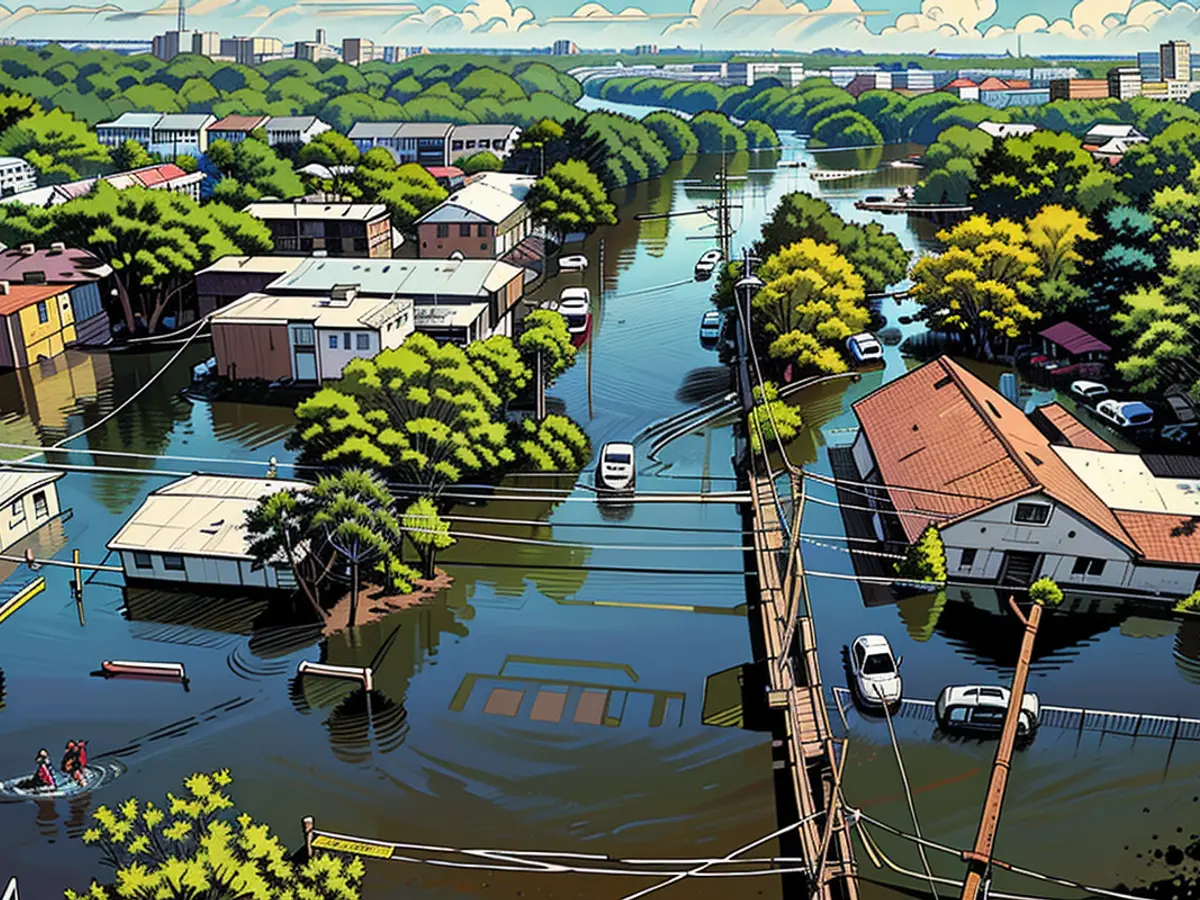- One Instagram influencer declared she was holed up in her Sarasota condo to aid her elderly neighbors, only to use her situation as a means to advertise her book. After the storm subsided, she shared an Instagram Story proclaiming, "I survived bitch."
- A TikTok creator stated in a video that he failed to depart from a mandatory evacuation zone in Tampa, labeling it as the "stupidest decision I've ever made." He soon amassed hundreds of thousands of likes as he posted several videos keeping his followers updated on his storm survival, inside his apartment.
- A different TikTok creator uploaded a video showcasing herself and her child outside their Sarasota house amid the storm, stating, "this is enjoyable, y'all should be here too. Why's everybody evacuate??" Only to follow it up with, "There's debris about to fly around, we're about to run inside."
- A couple of weeks prior, footage of a Florida man kayaking through several feet of water inside his Tampa home during Hurricane Helene turned viral. Consequently, he decided to stay put for Hurricane Milton, posting updates on his preparations and decision to face the storm head-on. One of his followers commented, "I cannot bring myself to like this ... please stay safe."
Influencers weathered Hurricane Milton, harnessing it for online content. What motivates our engagement?
Of course, such reckless behavior on the internet is nothing new. And some creators claimed additional reasons for not leaving, such as fears of long gas lines and traffic during evacuations.
However, this trend was a stark reminder of how social media can exacerbate dangerous situations. As Hurricane Milton approached, we saw creators flout official safety guidelines and spread false claims about "government weather manipulation" and "aid for hurricane victims."
It was both unsettling and surreal to witness people deliberately putting themselves in harm's way - risking not only themselves but potentially frontline responders who may later have to save them. It was also tragic, considering that at least 17 lives had been lost because of the storm, over 1,000 people had to be rescued, and many homes and businesses had been destroyed, partly due to climate change.
For all the potential of social media to disseminate essential safety information and resources, it often encourages the worst in humanity. Despite instances wherein popular creators shared Amazon wishlists to aid Hurricane Helene victims, the internet frequently brings out the worst.
As Brooke Erin Duffy, an associate professor in the Department of Communication at Cornell University, explained, "In some ways, it’s not surprising that we saw influencers and creators broadcasting the story given this kind of obligation to mine one's life for content."
This behavior is partly due to the platforms themselves, whose algorithms prioritize inflammatory content that generates user engagement and financially pays off when such content goes viral.
TikTok, acknowledging the danger, added warnings to certain creators' hurricane videos and made it impossible for dangerous videos to gain promotion on their For You page. Furthermore, they linked users to FEMA information.
Instagram, however, did not issue a statement regarding the matter.
Duffy also pointed out that creators may have been following the traditional news outlets' approach of sending reporters into extreme weather conditions, as modern-day Americans depend more on social media for information than traditional news sources.
However, social media users, including myself, also contribute to this problem by scrolling and watching such content, which could be filled with dark motivations. Many creators who shared content from the heart of the storm earned thousands of likes and comments, and even monetary gifts.
As Krysten Stein, an assistant professor of communication at Universal Cincinnati Blue Ash College, laughed, "On the one hand, you’re getting real-time, on-the-ground footage of what’s happening. On the other, it raises questions about the motivations behind posting such traumatic events. Are creators aiming to educate people about what’s going on, or is this being used as a way to monetize their content?"
Stein also pointed out that influencers are caught in a system where they rely on these platforms for monetary gain, and it is essential to recognize this fact.
- Despite the potential risks, some tech influencers chose to stay in hurricane-prone areas, using their platforms to share their experiences and garner attention, often monetizing their content through likes, comments, and donations.
- The business model of social media platforms, prioritizing inflammatory content over safety information, can unintentionally encourage creators to put themselves and others in danger during natural disasters for increased engagement and financial gain.








